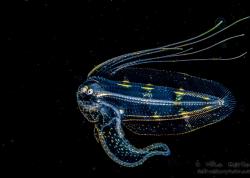Frogfish - facts, identification, behavior, photography
Frogfish are amongst my favorite critters to look for underwater. They are so well camouflaged and adapted to their immediate surroundings, that they are rarely detected. Often called grotesque, frogfish were declared “The spawn of Satan” by the mayor of Bitung, Indonesia.
Frogfish (Frog fish, frogfishes) are very misunderstood and very little is known about this unique underwater lie-in-wait predator. The hairy frogfish, Antennarius striatus, is a special type of frogfish that is one of the most popular subjects for underwater photographers.
Frogfish Habitats and Range
The twelve genera of Antennaridae (antennae bearing) Frogfish are found nearly worldwide but tend to be bunched as species in different oceans. This article highlights the frogfish of the info-pacific, found in the genus Antennarius.
The Giant frogfish, Antennarius commersoni, has a large range and can be found throughout the tropical Pacific, Eastern Atlantic, Eastern Pacific, Hawaii (Kona), Indian Ocean, Japan, Red Sea, Tropical Australia, Western Atlantic, Indonesia and Asia. Frogfish take on many different color forms throughout their lifecycle.
Frogfish Lifecycle, Size and Colorations
The complete length of the lifecycle of an individual is unknown outside of captivity. The size can range anywhere from 1/8 inch to 22 inches. As a juvenile the Giant frogfish may be white or yellow and saddled with reddish colored patches, often misidentified underwater as a clown frogfish. But as the individual grows towards the sex phase the colors can shift from pink, yellow, black, beige, green and more, often sporting scab like appendages. But all frogfish are speculated to have a chameleon like ability with some even growing hair like appendages.

Frogfish with lure, A. maculatus, waiting for its prey, Photo by Mike Bartick.
Frogfish - master of Camouflage

Large Frogfish and a sponge. I can't stop looking at this photo. Well, I'm still not convinced that it is not two frogfish! Photo by Andrew Taylor in Mozambique with an Olympus 7070 with a wide-angle lens.
Frogfish Behavior - Predation
Frogfish, also known as anglerfish, are lie-in-wait predators. They are equipped with a specialized lure called an Esca. The Illicium is the fishing rod appendage and the Esca is the bait, also specialized. Using its fishing rod and lure the frogfish will dangle the bait in front of its head. An unsuspecting passerby will see the lure and become excited, swimming towards a seemingly easy meal, the predator becomes the prey. The frogfish is a carnivore - its diet is small fish.
Frogfish move very slowly but ironically, frogfish have the fastest strike speed of any other animal on earth. They ambulate by gulping water with its massive mouth. Then forcing the water through it’s gills the frogfish moves about the reef or bottom. The body move’s very little as the frogfish huffs and puffs its way through the water column.
Are Frogfish Poisonous?
The majority of frogfish, such as the hairy frogfish, are not poisonous. There are a few species of toadfish that are poisonous, in the family Batrachoididae - but those are not frogfish. Frogfish are not known to taste well, you should not eat them.

Mating frogfishes, A. maculatus, photo by Mike Bartick.
The best places to find frogfish underwater are:
- Tropical and some sub-tropical waters.
- Any Muck Diving site in places such as Anilao or Dumaguete Philippines, Bali, Lembeh Strait, Hawaii, Fiji, Mexico, SouthEast Florida
- Hairy Frogfish - Indonesia, Lembeh Straits
- Reefs near or on sponges of same or similar color
- Some sandy bottoms near orange or yellow sponge
- Underwater near pilings, mooring weights, rope or discarded debris, chains, root systems in estuary’s, sea grass and sargussum
- Near fields of black urchins (black hairy frogfish)
Unique Behavior of the frogfish and best photo ops are:
- Cannibalistic and will feed on others of the same species
- Relaxing its jaw or yawning, opening its enormous mouth
- Dangling of the Esca, fishing
- Feeding-will often attempt to consume animals larger then themselves
- Mating dance-circling and vibrating movement
- Male of the species attaches eggs to himself
- Ambulating through the water column

Frogfish yawning, A. commerson, photo by Mike Bartick.
Underwater Photography Tips for Frogfish:
- Patience is important for underwater photography of frogfish - try not to touch, poke or antagonize. They will usually continue their behavior in front of the camera
- Lens choices can range from 105mm to 10.5mm, depending on the size of the frogfish. Most mid range lenses are perfect, and a compact camera has a very good range
- Side lighting is best for intricate detail of camouflage pattern
- Focus locking for rapid fire photos or to shoot while yawning and for black objects
- Never herd frogfish together for cute photos, they will attempt to eat each other. Rather, try to shoot a natural behavior photo
- Use a shallow depth of field to create bokeh in the background, helping to isolate the frogfish from the substrate
- Use inward-facing strobe positioning (see the bottom of the article), which will allow you to create a black background behind the frogfish even if there is only 6-12 inches of open water behind it.
- Leave space in the frame so you are ready for behavior shots (frogfish using its lure, frogfish yawning, etc)
 Hairy Frogfish, aka Striated Frogfish
Hairy Frogfish, aka Striated Frogfish



Juvenile Frogfish, Antennarius commerson or pictus, photo by Mike Bartick.

Juvenile frogfish, A. pictus, in Anilao, photo by Scott Gietler. These tiny frogfish, less than 10mm are great subjects for supermacro underwater photography.
Common Indo-pacific Frogfish Species

Juvenile painted frogfish

Painted frogfish, Antennarius pictus

Painted frogfish, Antennarius pictus, photo by Jeffrey de Guzman. Species often develop large scab like patches on body. This species has the ability to change almost any color including white, black, red, pink, orange, yellow and brown.

Juvenile warty frogfish

Warty frogfish.

Warty frogfish (Clown frogfish), Antennarius maculatus. Photos by Jeffrey de Guzman. Juveniles frequently yellow with red-brown saddle and orange borders of rear dorsal and tail fins. Often in open sand.

Antennarius nummifer. Photos by Jeffrey de Guzman
ID: Color changeable to match surroundings.

Hairy frogfish, aka Striated frogfish, Antennarius striatus. These frogfish come in different varieties, often striped or with hairy appendages.

Giant Frogfish, Antennarius commerson photo by Scott Gietler
Frogfish Resources
Zubi's excellent frogfish site
Marine Life Articles
Photography tips, behavior, top dive sites
Habitat and dive sites of this beautiful octopus
Feeding habits, top dive sites, how to photograph them
Natural history, range, best times to visit
Natural History, photo tips, how to find them
Predation, Feeding, Cleaning, Mating, Eggs - examples and photo tips

RECOMMENDED ARTICLES
SUPPORT THE UNDERWATER PHOTOGRAPHY GUIDE:
The Best Service & Prices on u/w Photo Gear
 Visit Bluewater Photo & Video for all your underwater photography and video gear. Click, or call the team at (310) 633-5052 for expert advice!
Visit Bluewater Photo & Video for all your underwater photography and video gear. Click, or call the team at (310) 633-5052 for expert advice!
The Best Pricing, Service & Expert Advice to Book your Dive Trips
 Bluewater Travel is your full-service scuba travel agency. Let our expert advisers plan and book your next dive vacation. Run by divers, for divers.
Bluewater Travel is your full-service scuba travel agency. Let our expert advisers plan and book your next dive vacation. Run by divers, for divers.

































